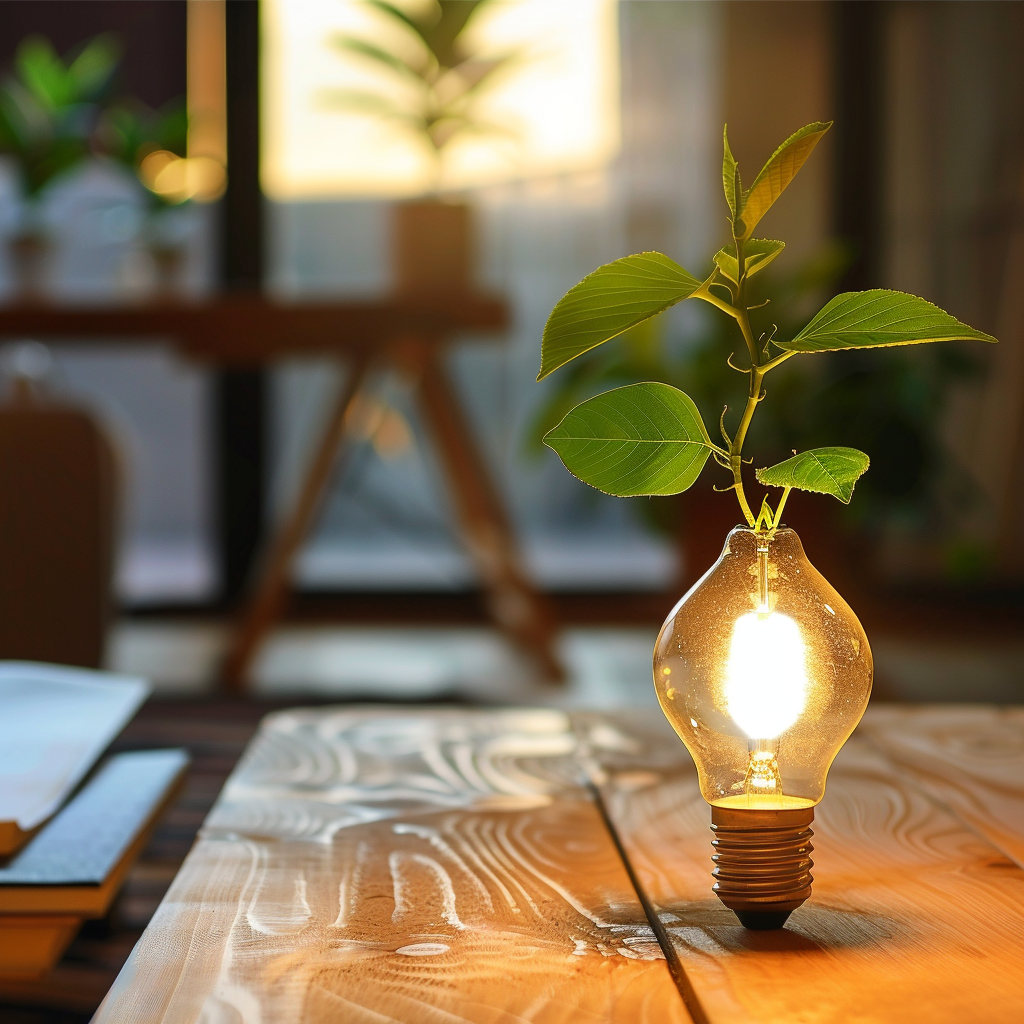5 Ingenious Ways to Lower Your Electricity Bill
Electricity bills can be a significant part of household expenses, but there are many ways to reduce them without compromising comfort or convenience. By employing some clever strategies, you can cut down on energy usage and save money. Here are five ingenious ways to lower your electricity bill.
1. Embrace Smart Home Technology

Smart Thermostats:
One of the most effective ways to manage your energy consumption is by using a smart thermostat. These devices learn your schedule and preferences, adjusting the temperature automatically to ensure comfort while optimizing energy use. For instance, a smart thermostat can lower the temperature when you’re not at home and raise it just before you return, ensuring you never heat or cool an empty house. Popular options include the Nest Learning Thermostat and the Ecobee SmartThermostat, both of which offer advanced features such as remote control via smartphone apps and integration with other smart home devices.
Smart Plugs and Power Strips:
Smart plugs and power strips can help you control the power supply to various devices in your home. With these tools, you can schedule devices to turn off when not in use or even control them remotely via your smartphone. This is particularly useful for managing “vampire” appliances that draw power even when they’re turned off, such as TVs, gaming consoles, and chargers. Brands like TP-Link and Belkin offer reliable options that can be easily integrated into your smart home ecosystem.
Smart Lighting:
Invest in smart lighting solutions that allow you to control lights remotely, set schedules, and even adjust brightness levels. Many smart bulbs are also energy-efficient LEDs, which use significantly less electricity compared to traditional incandescent bulbs. By using smart lighting, you can ensure that lights are only on when needed, reducing unnecessary energy consumption. Philips Hue and LIFX are popular brands that provide a wide range of smart lighting options to suit any home.
2. Optimize Heating and Cooling Efficiency

Seal Leaks and Insulate:
Heating and cooling account for a large portion of household energy use. One of the most effective ways to reduce this is by ensuring your home is well-insulated and free of leaks. Check windows, doors, and other openings for drafts and seal them with weatherstripping or caulk. Adding insulation to your attic, walls, and floors can also significantly reduce the amount of energy needed to maintain a comfortable temperature. Products like Frost King Weatherseal and Great Stuff Insulating Foam Sealant are excellent for sealing leaks.
Ceiling Fans:
Ceiling fans can be a great supplement to your heating and cooling system. In the summer, they create a breeze that can make a room feel cooler, allowing you to raise the thermostat a few degrees without sacrificing comfort. In the winter, reversing the direction of the fan can help circulate warm air that rises to the ceiling, reducing the need for additional heating. Hunter and Casablanca are well-regarded brands that offer efficient and stylish ceiling fans.
Energy-Efficient Windows:
Consider upgrading to energy-efficient windows, which are designed to minimize heat transfer and reduce energy loss. These windows typically have multiple panes of glass, low-emissivity (Low-E) coatings, and gas fills that provide better insulation than standard windows. While the upfront cost can be high, the long-term savings on your energy bills can make it a worthwhile investment. Andersen and Pella are reputable manufacturers of energy-efficient windows.
3. Upgrade to Energy-Efficient Appliances

ENERGY STAR Appliances:
When it’s time to replace old appliances, look for the ENERGY STAR label, which indicates that the appliance meets strict energy efficiency guidelines set by the U.S. Environmental Protection Agency. ENERGY STAR appliances, such as refrigerators, washing machines, and dishwashers, use significantly less energy than their non-certified counterparts, leading to substantial savings over time. Brands like LG, Samsung, and Whirlpool offer a variety of ENERGY STAR-certified appliances.
Induction Cooktops:
Induction cooktops are more energy-efficient than traditional gas or electric stovetops because they use electromagnetic energy to directly heat pots and pans. This method reduces heat loss and cooks food faster, using less energy in the process. Additionally, induction cooktops remain cool to the touch, reducing the need for additional cooling in the kitchen. Bosch and GE are well-known for their high-quality induction cooktops.
Tankless Water Heaters:
Traditional water heaters maintain a reservoir of hot water, which requires constant energy to keep warm. Tankless water heaters, on the other hand, heat water on demand, providing hot water only when needed. This can lead to significant energy savings, especially in households where hot water usage is sporadic. Rinnai and Rheem are leading manufacturers of efficient tankless water heaters.
4. Harness Renewable Energy

Solar Panels:
Investing in solar panels can dramatically reduce your reliance on the grid and lower your electricity bills. Solar panels convert sunlight into electricity, which can be used to power your home. Many regions offer incentives and tax credits to help offset the initial installation cost. Over time, the savings on your electricity bills can more than make up for the investment, and you may even be able to sell excess power back to the grid. Tesla and SunPower are among the top providers of solar panel systems.
Solar Water Heaters:
Solar water heaters use the sun’s energy to heat water, reducing the need for conventional water heating methods. These systems can be particularly effective in sunny climates and can significantly reduce the energy required to produce hot water for your home. Solahart and Rheem offer reliable solar water heating solutions.
Wind Turbines:
If you live in an area with consistent wind, a small wind turbine can be a viable option for generating renewable energy. While not suitable for every location, wind turbines can produce a significant amount of electricity and reduce your dependence on the grid. Bergey and Skystream manufacture small-scale wind turbines suitable for residential use.
5. Practice Energy-Saving Habits

Unplug Unused Devices:
Many electronics and appliances consume power even when turned off, a phenomenon known as phantom load or standby power. Unplugging devices when they are not in use, or using power strips to easily turn off multiple devices at once, can help eliminate this wasted energy. The Belkin Conserve Switch and APC Smart Plug are useful tools for managing phantom loads.
Use Natural Light:
Maximize the use of natural light to reduce the need for artificial lighting. Keep curtains and blinds open during the day to let in sunlight, and consider installing skylights or larger windows to increase natural light exposure. This can also help reduce heating costs in the winter by allowing sunlight to warm your home. Velux and Solatube offer innovative skylight solutions.
Adjust Your Habits:
Simple changes in behavior can lead to significant energy savings. For example, lowering your thermostat by a few degrees in the winter and raising it in the summer can make a big difference. Similarly, washing clothes in cold water, air-drying laundry, and taking shorter showers can all contribute to lower energy consumption. Energy-efficient practices, such as using a clothesline or drying rack and taking advantage of off-peak electricity rates, can further reduce your bills.
Energy-Efficient Landscaping:
Strategic landscaping can help reduce your energy bills by providing natural insulation and shading. Planting trees and shrubs around your home can block wind in the winter and provide shade in the summer, reducing the need for additional heating and cooling. Additionally, using ground cover and mulch can help retain moisture and reduce the need for watering, further saving energy. Consider native and drought-resistant plants to create an energy-efficient landscape.
Lowering your electricity bill doesn’t have to mean sacrificing comfort or convenience. By embracing smart home technology, optimizing heating and cooling efficiency, upgrading to energy-efficient appliances, harnessing renewable energy, and practicing energy-saving habits, you can significantly reduce your energy consumption and save money. These ingenious strategies not only benefit your wallet but also contribute to a more sustainable and eco-friendly lifestyle. With a little effort and investment, you can enjoy a more energy-efficient home and lower electricity bills for years to come.







